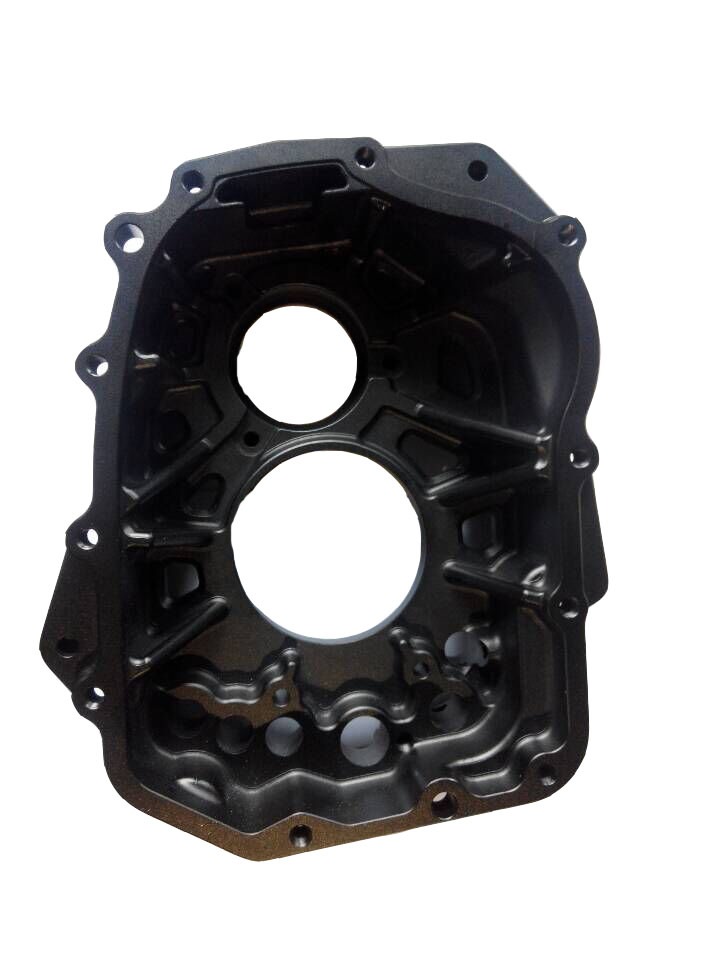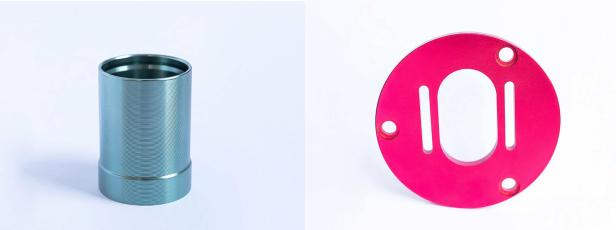Anodizing is a critical post-processing treatment for CNC machined aluminum parts, enhancing their performance and appearance. By creating a thick, porous oxide layer on the aluminum surface, anodizing provides exceptional corrosion resistance, wear resistance, and durability. This protective layer also improves the adhesion of coatings and allows for a wide variety of decorative finishes, making anodized aluminum a versatile choice for numerous applications. From aerospace and automotive to electronics and architecture, anodized aluminum components offer a combination of strength, durability, and aesthetic appeal.

Characteristics of CNC Machined Aluminum Parts
CNC machining, a highly precise manufacturing process controlled by computers, offers numerous advantages when applied to aluminum. This versatile metal, combined with the precision of CNC machining, results in components with a wide range of desirable properties. There are the key characteristics:
- High Precision: CNC machines are capable of producing parts with tolerances as low as a few micrometers. This exceptional precision is achieved through the use of advanced computer controls and high-quality tooling. This level of accuracy is crucial for applications in industries like aerospace, automotive, and medical, where precise dimensions are essential for optimal performance and safety.
- Complex Geometries: CNC machining can handle intricate designs that would be challenging or impossible to produce using traditional machining methods. The flexibility of CNC programming allows for the creation of features like undercuts, tapers, and complex curves. This capability opens up opportunities for innovative designs and functional improvements in various products.
- Repeatability: CNC machines can consistently produce identical parts, reducing the risk of human error and ensuring product quality. By following pre-programmed instructions, CNC machines can eliminate variations between parts, leading to improved product performance and reliability.
- Surface Finish: CNC machining offers a wide range of surface finishes, from coarse to fine. This flexibility allows for the customization of parts to meet specific functional and aesthetic requirements. A rough surface finish can increase surface area for better adhesion of coatings or heat dissipation, while a smooth surface finish can enhance appearance and reduce friction.
- Material Efficiency: CNC machining minimizes material waste by removing only the necessary material to create the desired shape. This efficient use of materials reduces costs and environmental impact. Additionally, CNC machines can be programmed to optimize tool paths, further reducing material waste and increasing production efficiency.
- Customization: CNC machining allows for easy customization of parts, enabling manufacturers to tailor components to specific applications. By modifying the CNC program, it is possible to change the dimensions, tolerances, and surface finishes of parts, providing flexibility and adaptability to meet diverse customer needs.

The Role of Aluminum in CNC Machining
Aluminum is a highly versatile metal that is frequently chosen for CNC machining due to its exceptional properties:
- Lightweight: Aluminum’s low density makes it ideal for applications where weight reduction is crucial. This is particularly beneficial in industries such as aerospace, automotive, and transportation, where lighter components can improve fuel efficiency and overall performance.
- Corrosion Resistance: Aluminum naturally forms a protective oxide layer on its surface, which provides excellent resistance to corrosion. This layer acts as a barrier against oxidation and other corrosive agents, making aluminum suitable for outdoor and marine applications.
- Excellent Machinability: Aluminum is relatively easy to machine compared to other metals, allowing for rapid production of parts. Its good machinability reduces tool wear and increases machining efficiency, leading to lower production costs.
- Good Thermal Conductivity: Aluminum possesses high thermal conductivity, making it an excellent choice for heat dissipation applications. This property is essential in components like heat sinks and electronic enclosures, where efficient heat transfer is crucial to prevent overheating.
- Ductility: Aluminum is a ductile metal, meaning it can be easily formed and bent into various shapes without breaking. This property makes it suitable for complex geometries and intricate designs, expanding the possibilities for CNC machining applications.

Enhancing Performance with Anodizing
To further optimize the performance and durability of CNC machined aluminum parts, anodizing is a commonly employed post-processing technique. This electrochemical process involves immersing the aluminum part in an electrolytic solution, causing a controlled oxidation reaction on the surface. This reaction results in the formation of a hard, porous oxide layer that offers a multitude of benefits:
- Increased Hardness: The anodized layer significantly enhances the surface hardness of the aluminum, making it more resistant to wear and abrasion. This is particularly beneficial for components subjected to mechanical stress, friction, or impact.
- Improved Corrosion Resistance: The anodized layer acts as a protective barrier against corrosion, shielding the underlying aluminum from exposure to moisture, chemicals, and other corrosive agents. This extended corrosion resistance significantly increases the lifespan of the part, especially in harsh environments.
- Enhanced Adhesion: The porous nature of the anodized layer provides excellent adhesion for coatings, such as paints and adhesives. This improved adhesion ensures long-lasting and durable finishes, enhancing the overall appearance and protection of the part.
- Electrical Insulation: Anodizing can create an insulating oxide layer, making it suitable for electronic components that require electrical isolation. This property is crucial in applications where electrical conductivity must be controlled or prevented.
- Aesthetic Appeal: Anodizing offers a wide range of colors and finishes, allowing for customization to meet specific design requirements. From vibrant colors to subdued tones, anodizing can enhance the visual appeal of aluminum parts, making them suitable for various applications, including consumer electronics, automotive, and architectural products.

Application of Anodizing in CNC Machined Aluminum Parts
Anodizing is widely used in CNC machined aluminum parts, which greatly improves the performance and service life of aluminum parts. The oxide film formed by anodizing can not only significantly improve the corrosion resistance, wear resistance and hardness of aluminum parts, but also give it a variety of functional properties.
- Aerospace field: Aerospace vehicles have extremely high requirements on material performance, and anodized aluminum parts are widely used in this field. For example, after the surface of the aircraft fuselage is anodized, it can effectively resist atmospheric corrosion and extend the life of the fuselage. In addition, anodizing can also improve the heat resistance of aluminum alloys, allowing them to maintain stable performance in high-temperature environments.
- Electronic product industry: Electronic products have high requirements on the electrical insulation and heat dissipation properties of materials. Anodized aluminum parts are widely used in electronic products, such as computer cases, mobile phone casings, etc. The oxide film formed by anodization has good electrical insulation properties and can effectively prevent short circuits in electronic components. At the same time, anodizing can also improve the heat dissipation performance of aluminum parts and extend the service life of electronic products.
- Building decoration industry: Anodized aluminum parts are very popular in the building decoration industry. Anodizing not only provides aluminum with a variety of colors and surface effects, but also improves its weathering and corrosion resistance. For example, anodized aluminum panels can be used for building exterior walls, doors and windows, etc. They are not only beautiful and elegant, but also have good weather resistance and can maintain their appearance for a long time.
- Automobile industry: In the automotive industry, anodized aluminum parts are mainly used to manufacture automotive parts, such as radiators, wheels, etc. Anodizing can improve the wear resistance and corrosion resistance of aluminum parts and extend their service life. In addition, anodizing can also improve the thermal conductivity of aluminum parts and increase heat dissipation efficiency.
- Medical device industry: Medical devices have extremely high requirements on biocompatibility, corrosion resistance and wear resistance of materials. Anodized aluminum parts are widely used in medical devices, such as surgical instruments, implants, etc. Anodizing can improve the biocompatibility of aluminum parts, reduce human body rejection, and at the same time improve its corrosion resistance and wear resistance, extending the service life of medical devices.

Elevating Aluminum: A Perfect Combination
CNC machining and anodizing have revolutionized the way aluminum is used in various industries. By combining the precision of CNC machining with the versatility of aluminum and the protective properties of anodizing, and choosing the professional CNC machining service provider JTR, you can create high-performance, durable, and aesthetically pleasing components.
From aerospace and automotive to electronics and architecture, CNC machined aluminum parts are making a significant impact. As technology continues to advance, we can expect to see even more innovative applications of this powerful combination, further pushing the boundaries of design and engineering.











